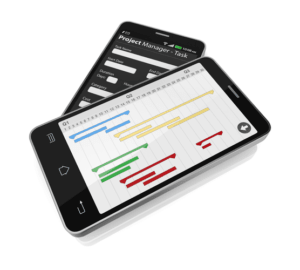Bookkeeping
A Financial Statement Analysis Principles of Accounting, Volume 1: Financial Accounting

This includes all of the money a company owes to vendors and suppliers for goods and services provided to the business before they are paid. If the debit and credit columns equal each other, it means the expenses equal the revenues. This would happen if a company broke even, meaning the company did not make or lose any money. If there is a difference between the two numbers, that difference is the amount of net income, or net loss, the company has earned. Looking at the income statement columns, we see that all revenue and expense accounts are listed in either the debit or credit column.
Financial Ratio Analysis Tutorial With Examples
However, the actual fuel costs can be classified under travel expenses and may be recorded on your balance sheet. Many companies rely on a third-party logistics (3PL) provider for shipping and fulfillment. Vendor invoices from these providers will typically include some or all of the above processes. However, your own financial data may simply have a line item about money owed to the company that sent you the invoice. From an accounting standpoint, revenues and expenses are listed on the P&L statement when they are incurred, not when the money flows in or out. One beneficial aspect of the P&L statement, in particular, is that it uses operating and nonoperating revenues and expenses, as defined by the Internal Revenue Service (IRS) and GAAP.
Total Asset Turnover

Other comprehensive income includes all unrealized gains and losses that are not reported on the income statement. Operating revenue is the revenue earned by selling a company’s products or services. The operating revenue for an auto manufacturer would be realized through the production and sale of autos. Operating revenue is generated from the core business activities of a company. Financial statements are reports compiled by businesses that detail the company’s financial activities and health.

Nonprofit Financial Statements
This means we must add a credit of $4,665 to the balance sheet column. Once we add the $4,665 to the credit side of the balance sheet column, the two columns equal $30,140. Service Revenue had a $9,500 credit balance in the trial balance column, and a $600 credit balance in the Adjustments column. To get the $10,100 credit balance in the adjusted trial income statement accounts balance column requires adding together both credits in the trial balance and adjustment columns (9,500 + 600). Once all accounts have balances in the adjusted trial balance columns, add the debits and credits to make sure they are equal. If you check the adjusted trial balance for Printing Plus, you will see the same equal balance is present.
When an account receivable becomes bad debt

There are a variety of ratios analysts use to gauge the efficiency of a company’s balance sheet. Some of the most common include asset turnover, the quick ratio, receivables turnover, days to sales, debt to assets, and debt to equity. To a skilled analyst, the data presented in a profit and loss statement can provide deep insights with the use of ratios. The credit to Service Revenues will increase Malloy’s revenues and net income—both of which are reported on its income statement. The income statement is a financial statement that reports on a company’s profitability over a period.
Business equipment refers broadly to anything you need to conduct normal business operations. This includes your physical equipment and assets, such as business software. You’ll find your accounts payables listed on your company’s balance sheet under current liabilities. In fact, some accounting professionals even refer to these costs as the “current liability account.” The fixed asset turnover ratio measures the company’s ability to generate sales from its fixed assets or plant and equipment. This means that XYZ has a lot of plant and equipment that is unproductive.
Profit vs. Total Value
- It is most useful to convert this information to a ratio to determine the company’s current financial health.
- Not all financial statements are created according to the same accounting rules.
- Larger companies have other fixed charges which can be taken into account.
- A balance sheet is meant to depict the total assets, liabilities, and shareholders’ equity of a company on a specific date, typically referred to as the reporting date.
- The cash flow statement reconciles the income statement with the balance sheet in three major business activities.
- Some businesses will create an accounts receivable aging schedule to solve this problem.
It’s important to note that the trial balance differs from the balance sheet. The balance sheet, on the other hand, is a financial statement distributed to other departments, investors, and lenders. Examples of revenue include https://www.bookstime.com/ the sales of merchandise, service fee revenue, subscription revenue, advertising revenue, interest revenue, etc. The revenue accounts are temporary accounts that facilitate the preparation of the income statement.
- To do this, you’ll need to add liabilities and shareholders’ equity together.
- They either need to find a way to increase their sales or sell off some of their plant and equipment.
- If a company or organization is privately held by a single owner, then shareholders’ equity will be relatively straightforward.
- A company that wants to budget properly, control costs, increase revenues, and make long-term expenditure decisions may want to use financial statement analysis to guide future operations.
- Finally, to record the cash payment, you’d debit your “cash” account by $500, and credit “accounts receivable—Keith’s Furniture Inc.” by $500 again to close it out once and for all.

